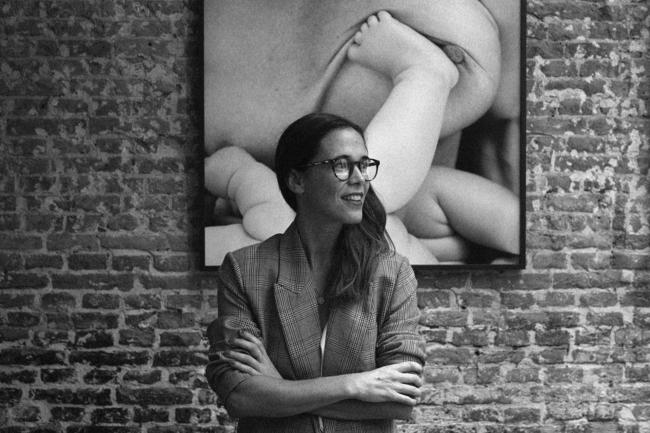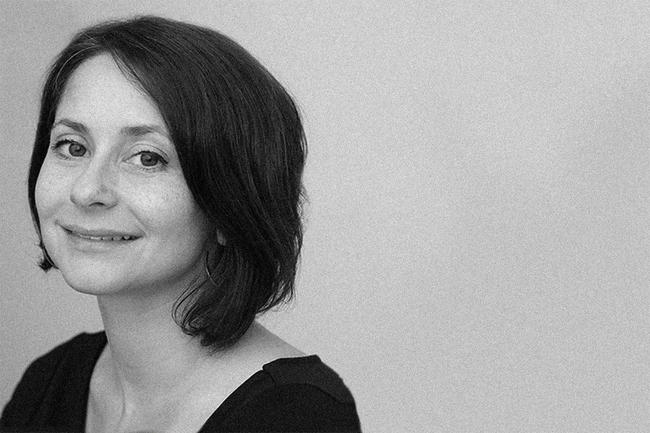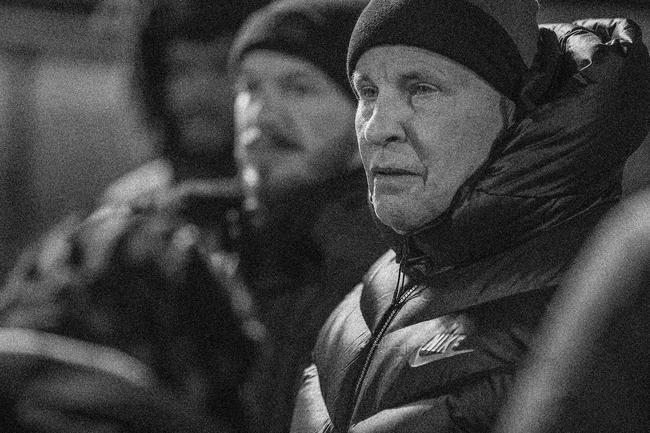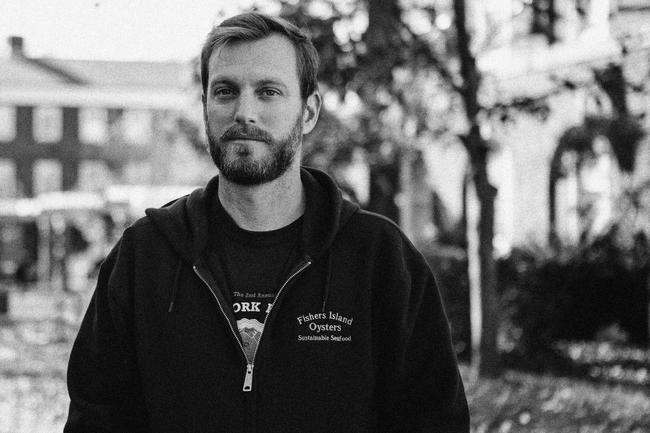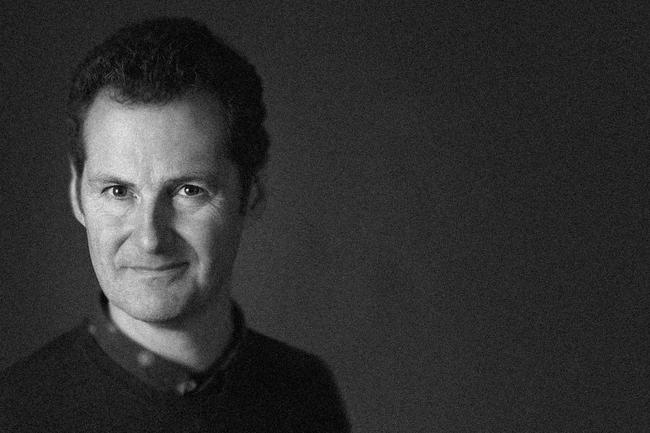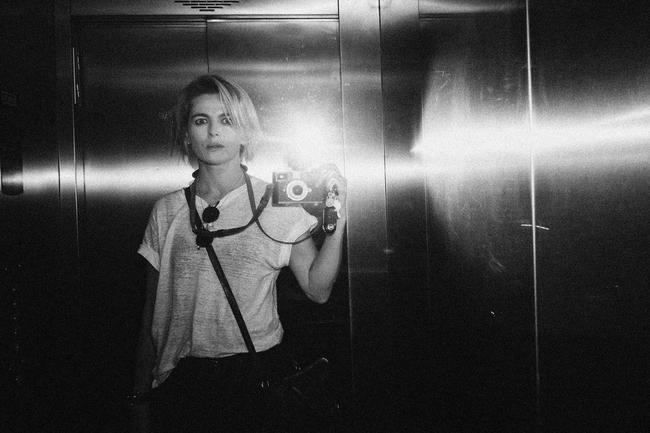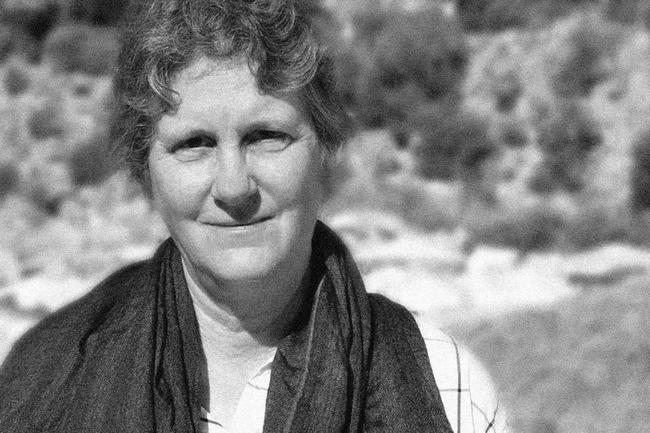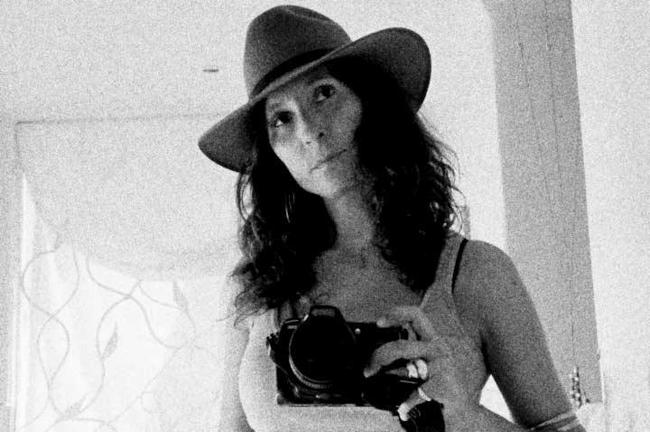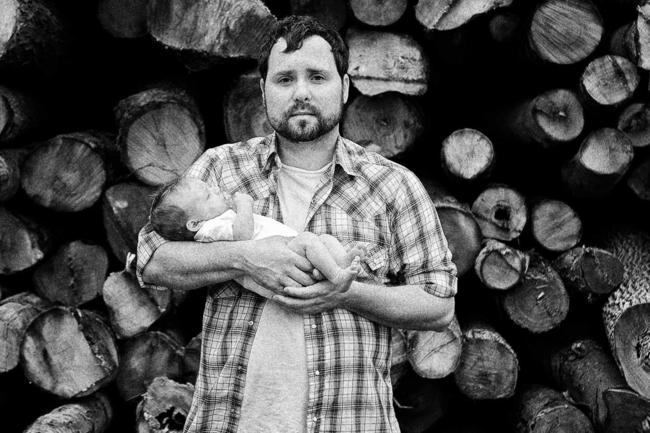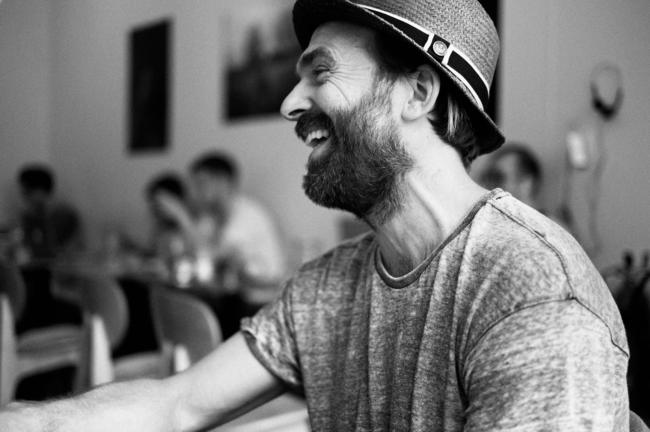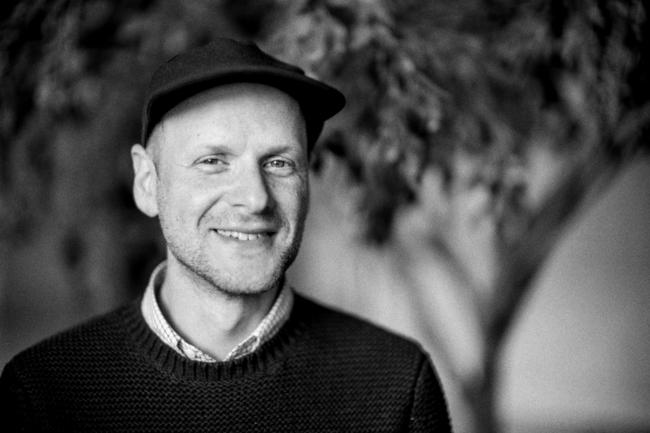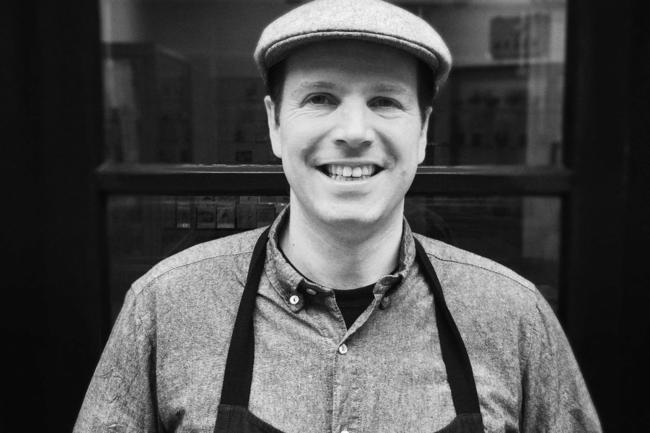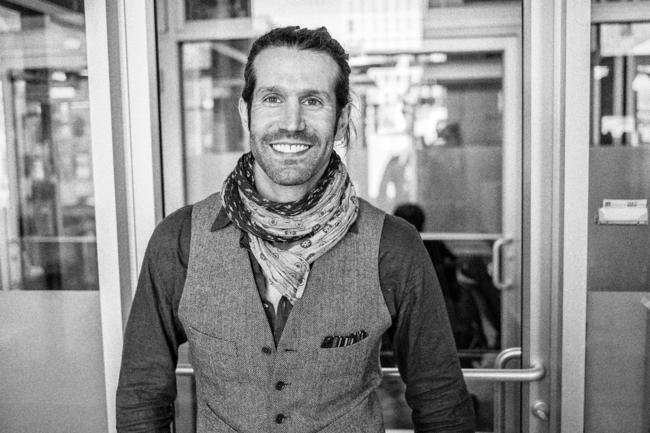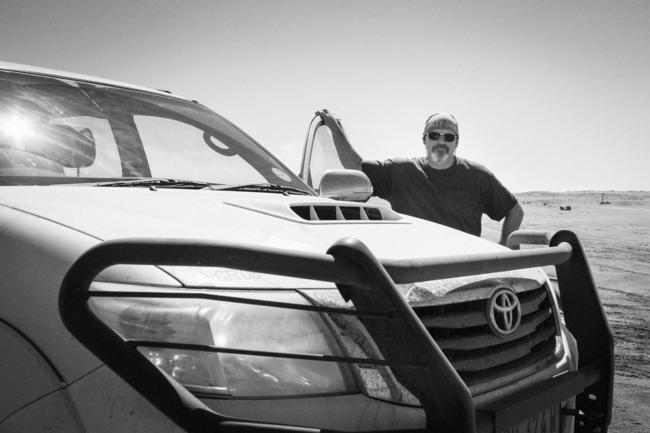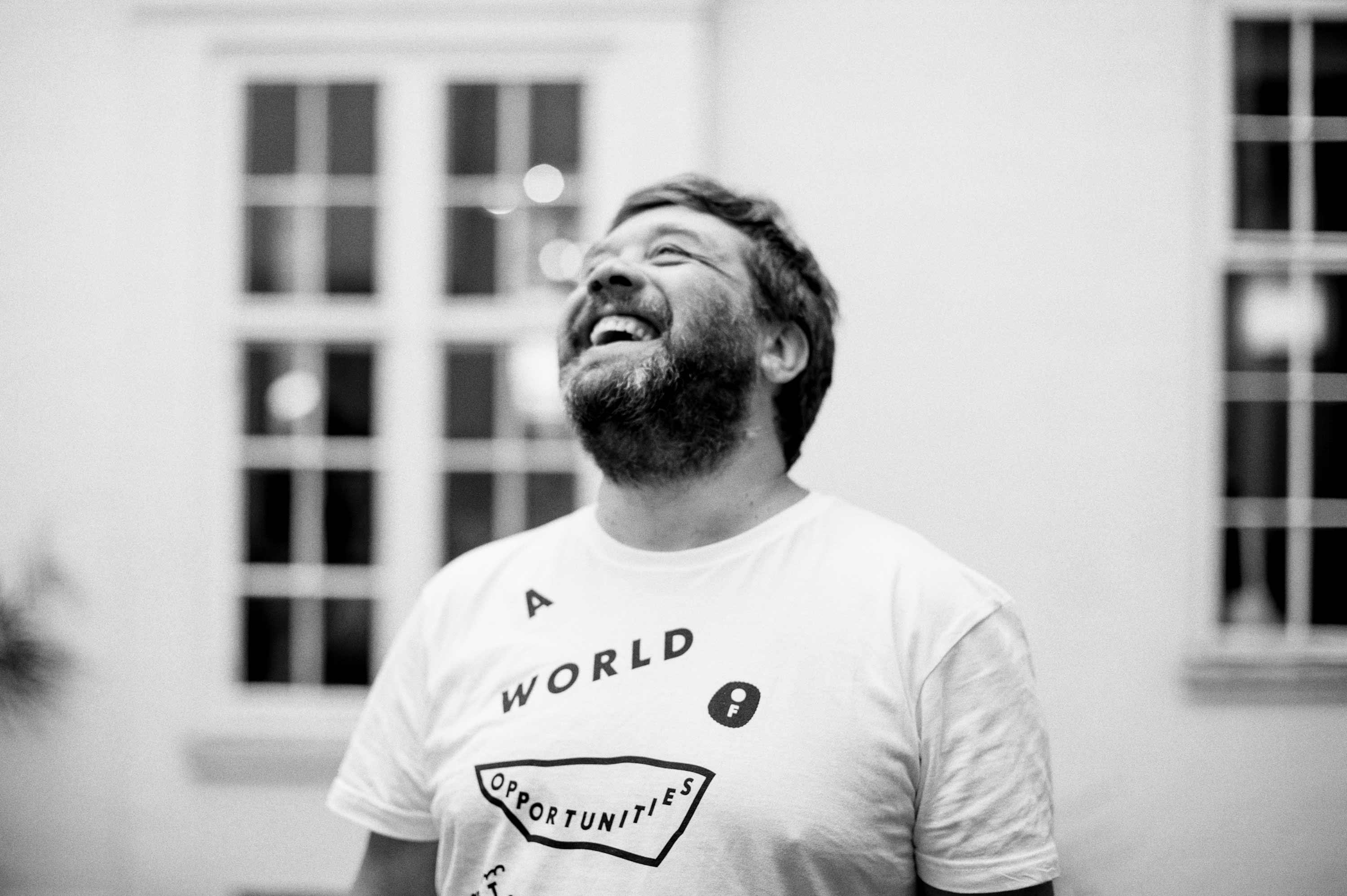
Conversation with Eike König
Eike is one of the most admired creatives from Germany today. His career started in the dance and techno scene in Offenbach and Frankfurt in the early 90s, where he designed some of the most iconic work for Logic Records. And he could have probably left it at that, and become part of creative history. But Eike is not a man to ever rest on his laurels. He moved to Berlin and started HORT, the ‘after school club’, attracting some pretty daring talent to collaborate with courageous clients. He has worked for some of the biggest brands, whenever they had the guts to hire him and his people. Eike eventually returned to Offenbach to be a professor at a top creative college in Germany. Well, he was not just a professor, his class was the ‘Königsklasse’ (the Royal Class). He travels a lot and collaborates with teams all over the world. Everyone loves Eike, his attitude and bold coolness. He is one daring man who just recently started to create something quite different again. His silkscreens are social commentary that speak clearly without taking anything too seriously. And that’s
obviously art.
Eike, we’ve known each other since our beginnings. You were already a cool, creative guy when we both visited the Kultur Bazaar (KuBa), a dance club just outside Frankfurt, Germany. And maybe because I’ve known you for such a long time, I’ve never even considered asking how you chose your creative path. It must have been very early on.
Yeah, we’ve known each other for an eternity, it seems; and yet not quite as well as we could. I was not really a “cool creative” when we first met. I was a rather shy and thoughtful guy who had major doubts about his abilities. It was not clear how I could fit into that rigid system of success. My father was a strict and yet very sensitive man (quite the combination). He was an architect and taught me to avoid any decorations. Instead I should take an idea, reduce it to the max and then run it through all of its possible iterations. I learned discipline and working as hard as possible to enable progress.
My father’s father, my grandfather, was even stricter than that. He forced me to learn to weave carpets and also to read some of the books from his library. They illustrated a slightly romantic perspective of his early life as a prisoner of war.
I remember this one time when I painted a calendar for him as a Christmas present. Every month had a different painting. For July, I painted a sunset. He thanked me with a typed letter suggesting that July was an “F” [Fail] – Kitsch.
I obviously never painted a calendar for him again.
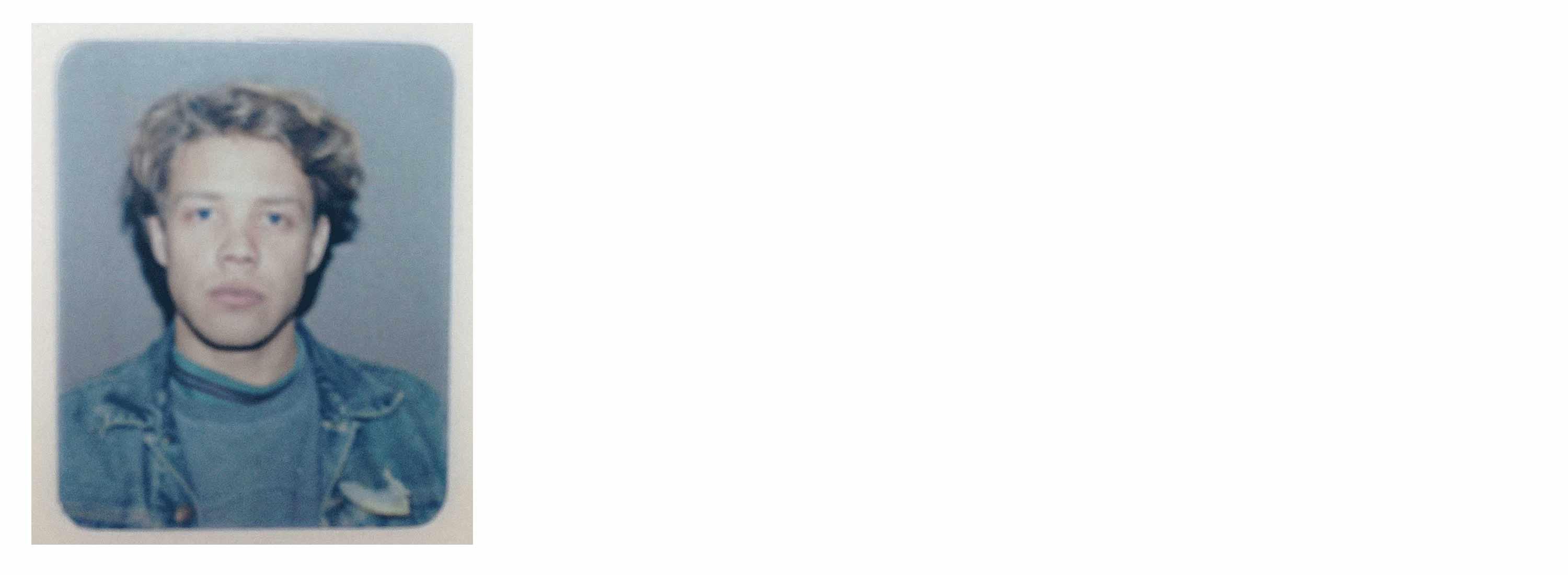
In the convoluted time of puberty I tried to distance myself massively from what these two men represented. Architecture became a hated taboo. It took many years for me to fall in love with architecture again. And it was at this time that I realized my father might have built the perfect family home.
It was probably this distance that fuelled an incredible energy to develop differently. It was a quest to prove to my “Role Models” that I could accomplish something, but in completely different ways to them.
I had a passion for music. But because a lot of it came through my much older cousins, I came into contact with music that did not interest my generation in the slightest. Listening to records was a ritual: removing the record from its sleeve, lowering the needle into the groove, and finding a comfortable spot; then listening to the music and studying the design of the record cover. That’s how I came in contact with the designs by Storm Thorgerson (Hipgnosis), Peter Saville, Reid Miles, Vaughan Oliver and a few more.
At the same time, I was a child in the time of the Cold War. My parents were quite interested in politics, and so we had many magazines filled with info-graphics describing the militarized state of the world. I was intimidated and also fascinated by the power of these tiny graphic illustrations.
I guess all of the above has pulled me towards graphic design. Maybe also the extensive drawing exercises. I drew eyes and hands a lot; our natural tools for seeing and making.

In school I was a classic bad student. So I had to find an alternative way towards some kind of work future. A failed student automatically becomes an outsider. And to find comfort in being an outsider, one needs to nurture that identity. I read Bukowski and enjoyed self-identifying with outsiders. I had a romantic view of what it would be like to live an artist’s life. And so I tried to be ascetic at times. And I tried to verbalize my fears and emotions through painting.
The active step towards applied arts came much later. And I am still very interested in the fine arts today. Maybe more than design actually.
It was quite early on that you took on an important role in the design for music. Even if it sounds a bit odd, but you were ahead of your time in some ways. And you managed to publish some pretty fascinating design with Logic Records. Did design for music hold a special importance for you? What is, for you, the connection between the various kinds of media? Or are you media agnostic?
I am not sure I was that important. It sounds a bit overblown. But as mentioned, the connection of music and design was something that fascinated me quite early on. It was more of an accident that I took on that direction. I designed some flyers and posters for various people. One of them was Fedi Choukair, a guy pretty well connected in the Frankfurt club scene. He got me an internship at Logic Records. It’s thanks to him that I’m where I am today.
I used the opportunity to become the label’s art director. I basically found a home for my creativity by sheer chance. I became responsible for all of Logic Records’ releases. I created their first website in 1993 and refreshed their brand identity. In the process, I got to know some of the major decision makers in the business.

It was a fascinating time: the transition towards working digitally. The owners of the label – Snap! were in love with technology. I had the most up to date Apple Macs in my art department, loaded with the freshest software, Photoshop 2.0 and FreeHand. It was a creative revolution for me.
My education was completely analogue. Design was a craft; the perfect communication between brain and hand. All of a sudden I had the opportunity to use cutting edge technology for my work. I was in love with the unlimited potential of this new world. At the same time, there was no completely defined visual language, no “defined brand” for techno. And that meant that I could try things out and experiment. When I wanted to create something new, I would not get push back, but encouragement. And so I did not settle for a specific style but questioned myself and kept reinventing. It was a blessing of living in the age of innocence of an entire genre.
When did you move to Berlin and why? Was it at the same time as you started Hort Is Berlin still good, or better than ever?
It was in 2007. I was completely connected to the Frankfurt region. I grew up there, all my friends were there, went to school there, and college too. I could have easily stayed in Frankfurt. I was connected to the scene and I knew where things were heading.
But Hort was getting more and more international exposure. And the people I worked with were also from all over the world. So Frankfurt somehow didn’t feel right. I asked my colleagues where they would most like to work and live – and we chose Berlin.

It took me a year to find the right studio space. Eventually, I managed to find a big room in an old tobacco factory, roof deck and all. And so we loaded up a truck and moved to Berlin, together.
Looking back, it was probably our best decision. To leave your familiar network, leave the familiar environment, forces you to open your eyes. You have to create new networks. Amazingly positive energy is set free that way. One should probably change cities every few years, to be honest. But Berlin still offers a very big spectrum of opportunities and wide field for new discoveries. It is still one of the most affordable capitals in the world, with a very good quality of life.
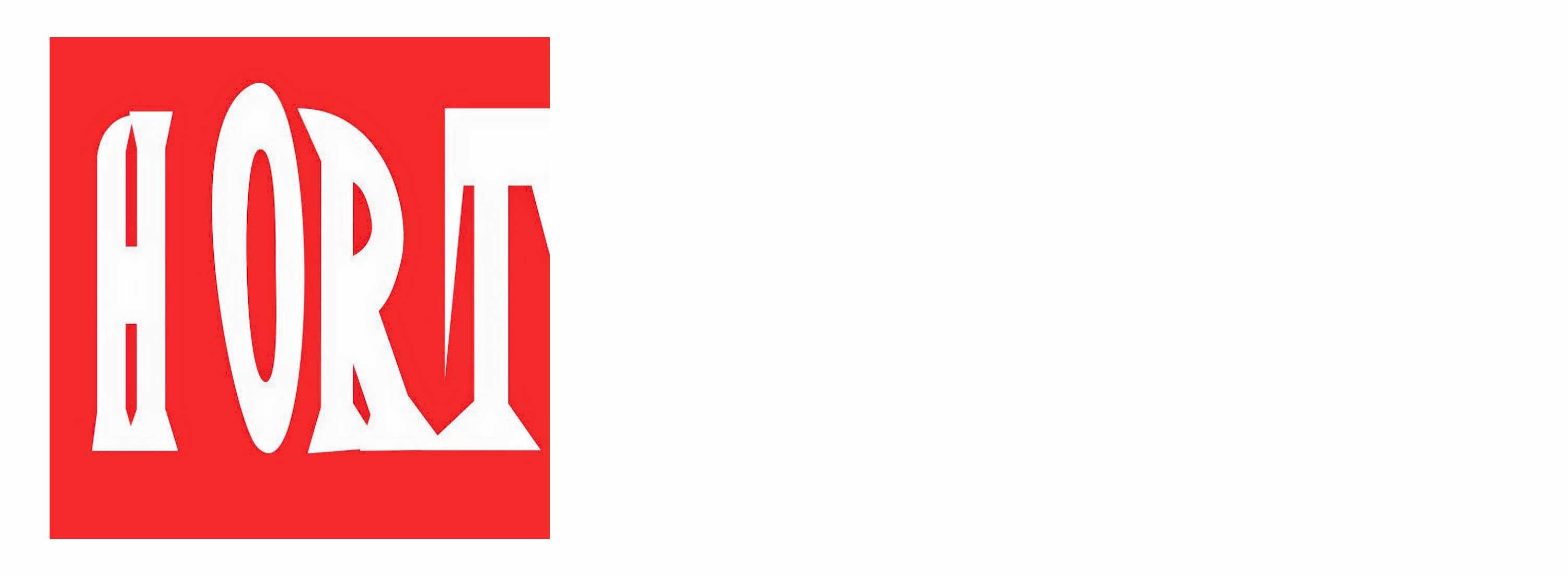
Hort is yet another concept far ahead of its time. Can you tell us something more about it? Is it a kind of agency or a design studio? Or is it perhaps just an exciting place for the creation of interesting stuff. Or is it more of a place for inspiration; a place to experience something new and unexpected?
Even the name is somehow exciting: Hort, or After School Club: a kind of safe space. A protected space where we can try things out, experiment and grow.
The culture we developed here has grown out of pure practical experience. There was no strategy, just the wish to create something different, something unusual. How could we develop a space that would not force people into a specific direction but quite the opposite: one that would adjust to the events, needs and possibilities of the individual? How can we work together on big projects without the shackles of hierarchies? How can we create a discourse that can put everyone’s ego into the background? How can we share without any fear that the ideas could be stolen?
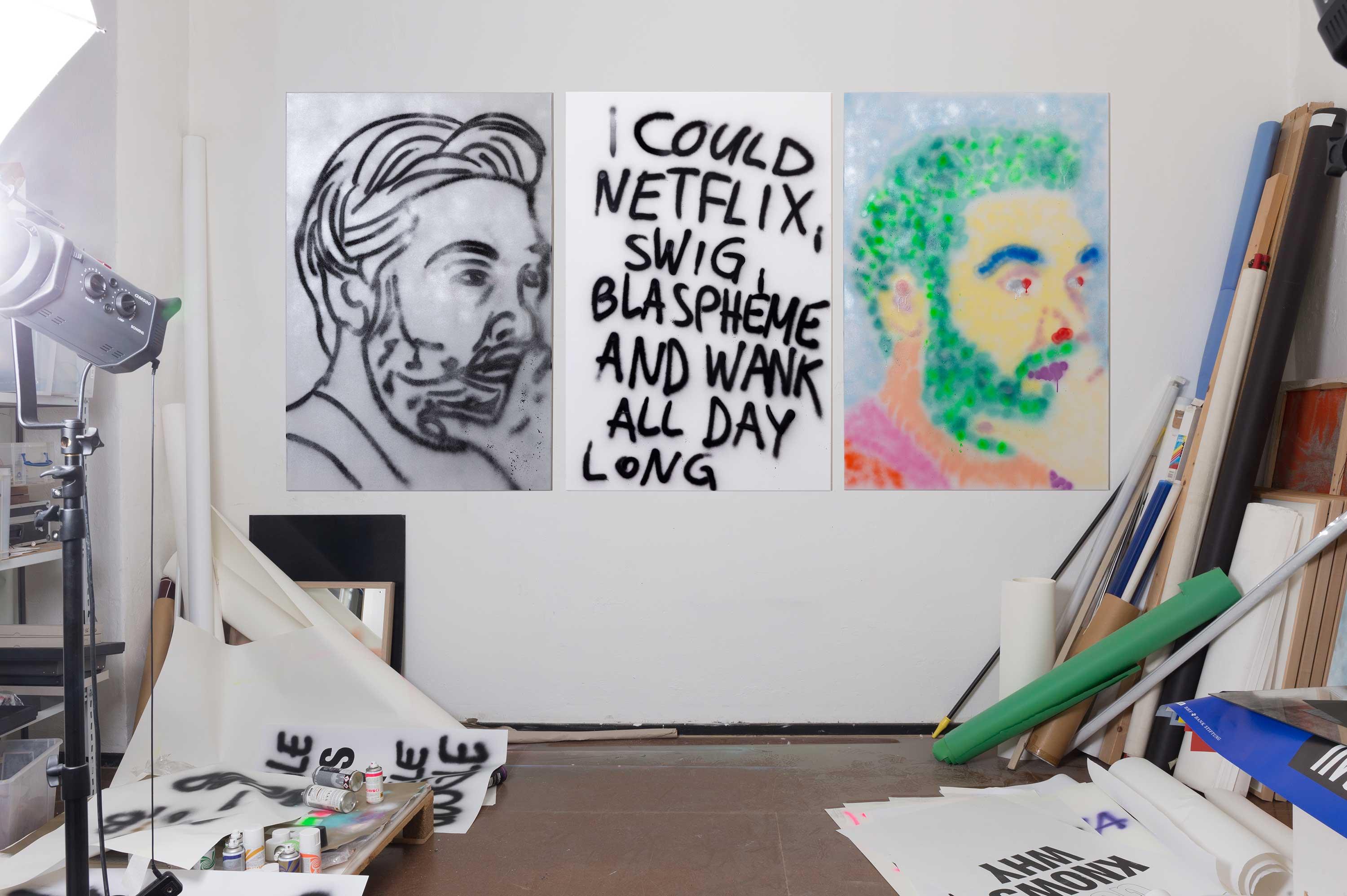
Hort has morphed again and again over the years. It’s a kind of organic growth process. I was by myself at first. Then, suddenly, we were 12. And that was too big a group. I started losing the personal connection with everyone. Now we are more of an art collective. Everyone has their own goals and projects. Hort is our brand when we work on bigger projects. But everyone has his or her own capabilities and interests. That’s how we manage to work together and stay motivated. And dare to ask interesting questions.

So is it design or is it art? Many of your works seem to be holding a fist up towards the sky. It’s not accommodating design. It’s design with a lot of self-confidence. Or how would you describe your work now?
We want to use our design to convey a point of view. It’s self-confident, yes, but I think that is an important aspect of our profession. We want to work with our clients to develop communication that is sometimes challenging. But it is also about working hard to dissect the clichés around the given product. This way we can redefine things.

We see ourselves as advisors and consultants, not a service office that submissively executes other people’s ideas. Our way of working has taken root over time and our clients seem to appreciate what we offer. But it is an ongoing process and we refine it and develop it.
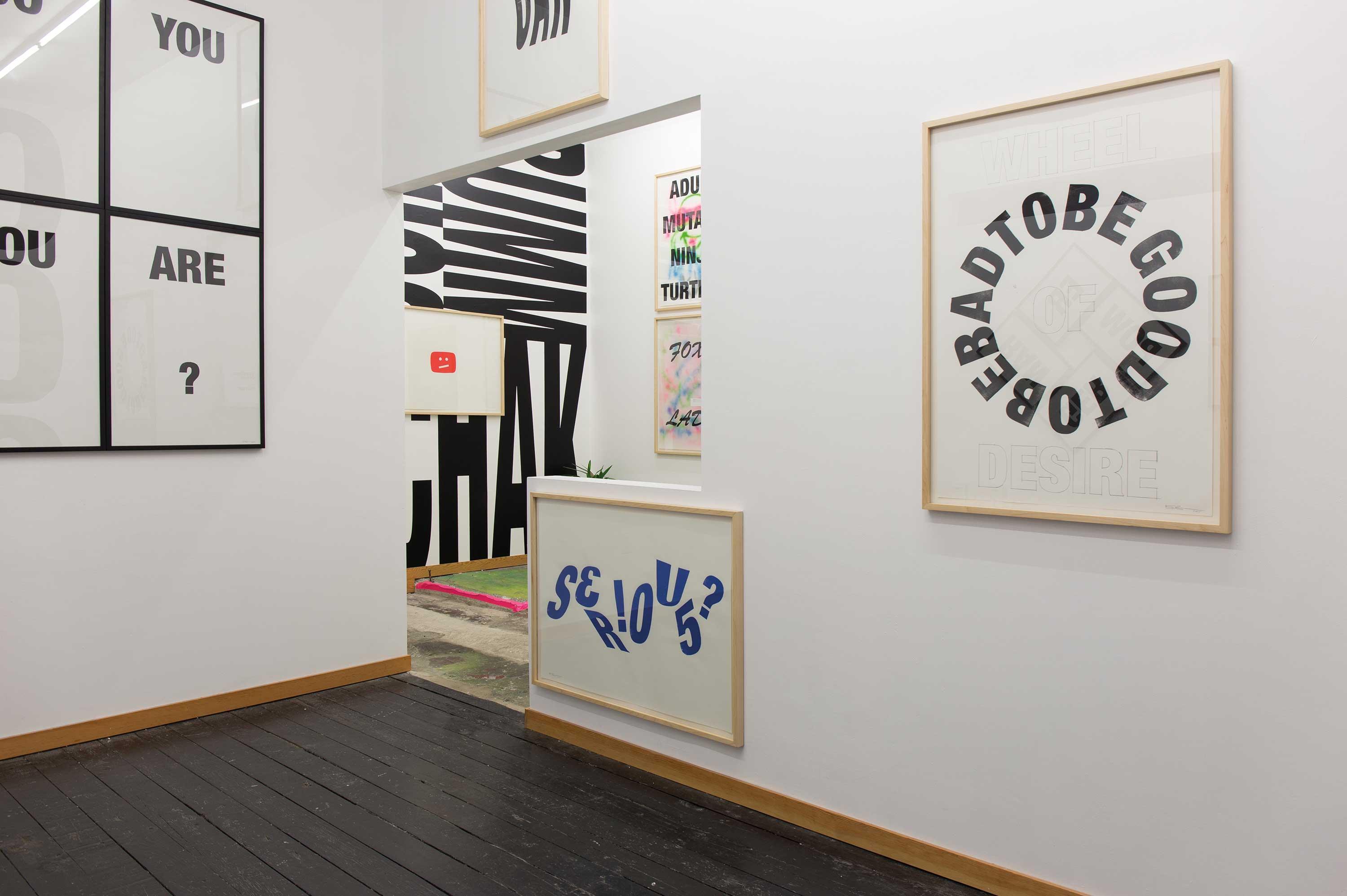
It’s definitely not fine art. It’s too applied for that. But everyone here at Hort is very interested in art. We enjoy reading about art strategy and art concepts.
We basically not only want to create something beautiful but also something that reflects the needs of the given concept. And we try to focus on the essential as well as possible.
Collaboration, working together, and the collaborative development of ideas are big topics for us here at Tea & Water. You seem to love this way of working. What does collaboration look like for you?
“Collaboration” is currently a bit of a buzzword. But I’m convinced that what we see here is the emergence of modern structures of working together. It’s about the bringing together of various experiences and knowledge towards one topic, one goal. It works best with incredibly diverse teams. That’s the best way to arrive at a variety of perspectives and points of view. I have always enjoyed working with people who come from all throws of life. My favourite work is with people who are better than me; that’s an opportunity to grow and to learn from them.
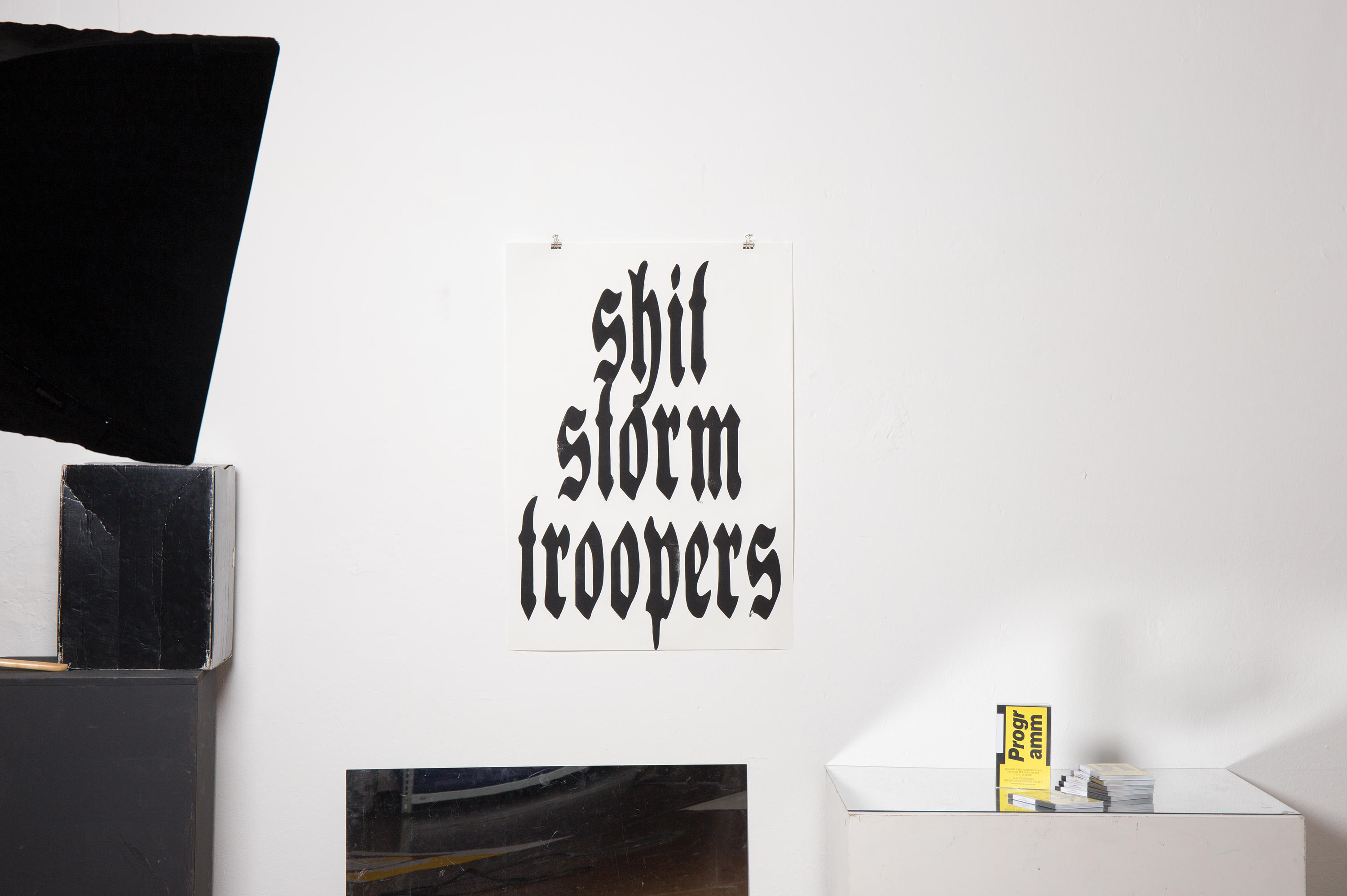
Can you tell us something about the Königsklasse? How many people were lucky enough to be part of it? [It’s hard to translate “Königsklasse” it literally means ‘royal class’ but is derived from Eike’s last name.]
Well, the Königsklasse is a group of people studying various disciplines at the HfG (Hochschule für Gestaltung in Offenbach): painting, sculpture, photography, illustration, and graphic design. It’s a longer-term commitment and we are working together on solving some individual challenges and life touching questions. It’s very much a social experience in that every individual process is accompanied and supported in the group. We organise many excursions and exhibitions. We visit artists and their studios. We organise groups that are very similar to the after school club. We are basically not dealing with art per se, but also with life in general.
At this time, there are about 15 people in the group. But everyone is very much welcome to join and participate. It’s a bit of a natural selection process. The group naturally accepts those who are ready to stand up for their ideas.

Just recently one of your presentation slides went viral on Facebook. I am talking about the eight points. How did you arrive at these? And do you really live by those points?
As well as I can, yes. And when it’s not the case then it is time to read the points again and get back on track. It hasn’t always worked. The points are a bit naïve. But the general direction is good. In the end, it is a good support point, and a reminder to stay true to myself. That manifesto has indeed been shared thousands of times. I seem to have hit a nerve with those points. And that was 1994!

Hort is registered as a UK web domain. You travel a lot and are admired around the world. Do you find it interesting to work globally?Actually, the real reason why we have the UK domain is a funny one. All domains were already taken, only not the .ORG.UK one. So we took that. So many people wrongly thought again and again that we were located in the UK. But we are an international team and so that works quite well as it is.
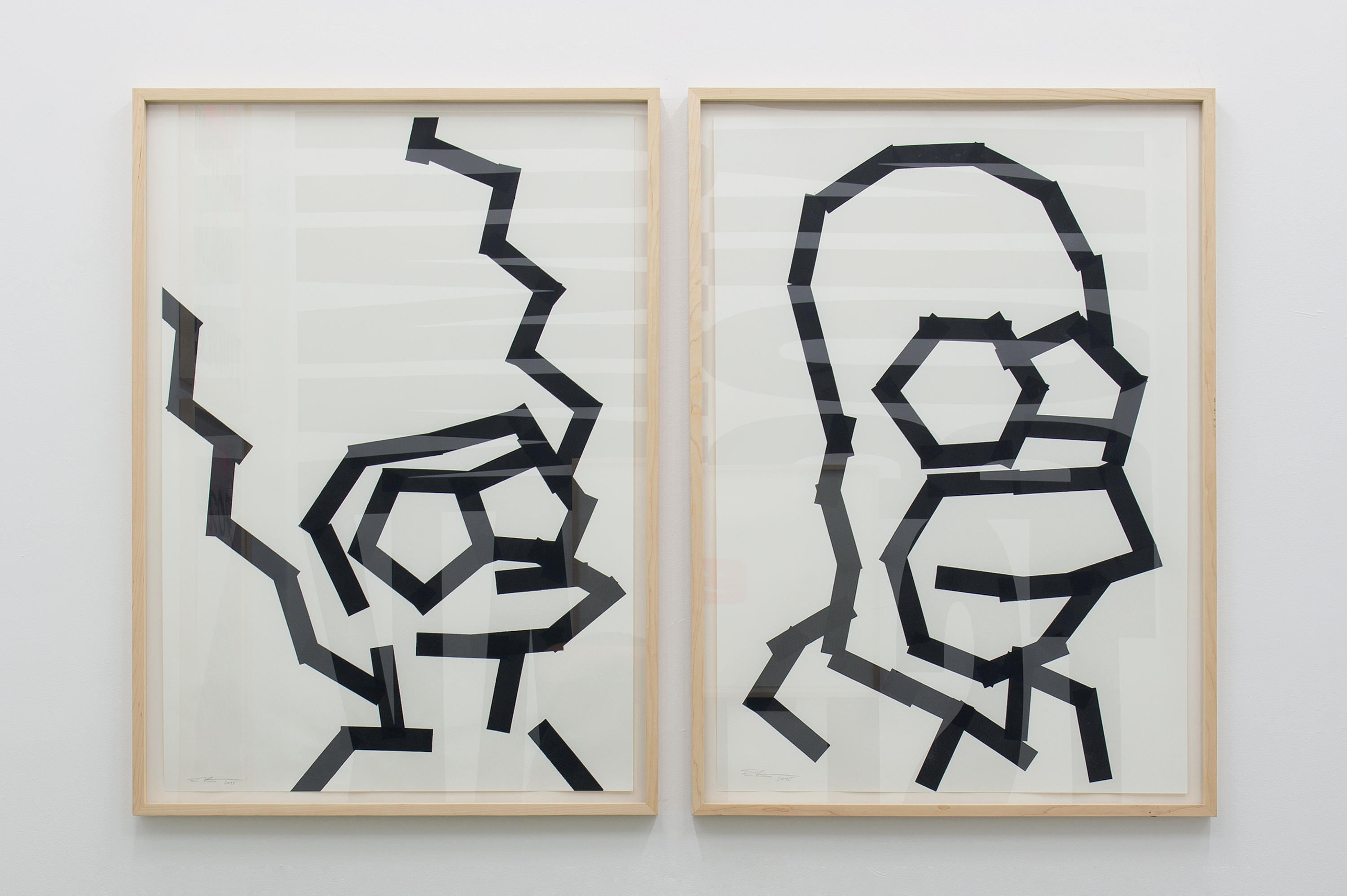
I have the extraordinary fortune to be able to travel the world because of my profession. I like to speak at conferences around the world, and when I visit a country, I do like to spend some time in it. I am just returning from Colombia. That place has been a secret dream destination for me for a good while. I just found out that I might be potentially going to Costa Rica next April for a super interesting project in the rain forest.

I have always been interested in many other cultures. It is also a great way to understand one’s own. And as soon as the first international projects took shape I realised how exciting and insightful the whole process could be. At this point, many of our culture-oriented clients are still in the German speaking area. But this is slowly shifting. I think that with the identity for the Bergen Assembly Triennial (http://bergenassembly.no ) we have opened the door to interesting international projects. To create something that bridges cultures is a fascinating challenge.

And travelling the world should be compulsory for everyone. It really opens one’s eyes and removes those horrible blindspots of narrow-mindedness. Every person on earth lives his or her own truth. And it is good to be interested in what it is.
What are your plans for the future? Will you visit us more? What’s your dream project? What’s next?
My main focus is currently on my private fine art work. It’s a totally untouched area for me. I can explore it as much as I want, it gives me balance; it grounds me.
I don’t have what’s usually defined as ‘dream projects’. I find a lot of stuff interesting and there is plenty of work worth diving into.
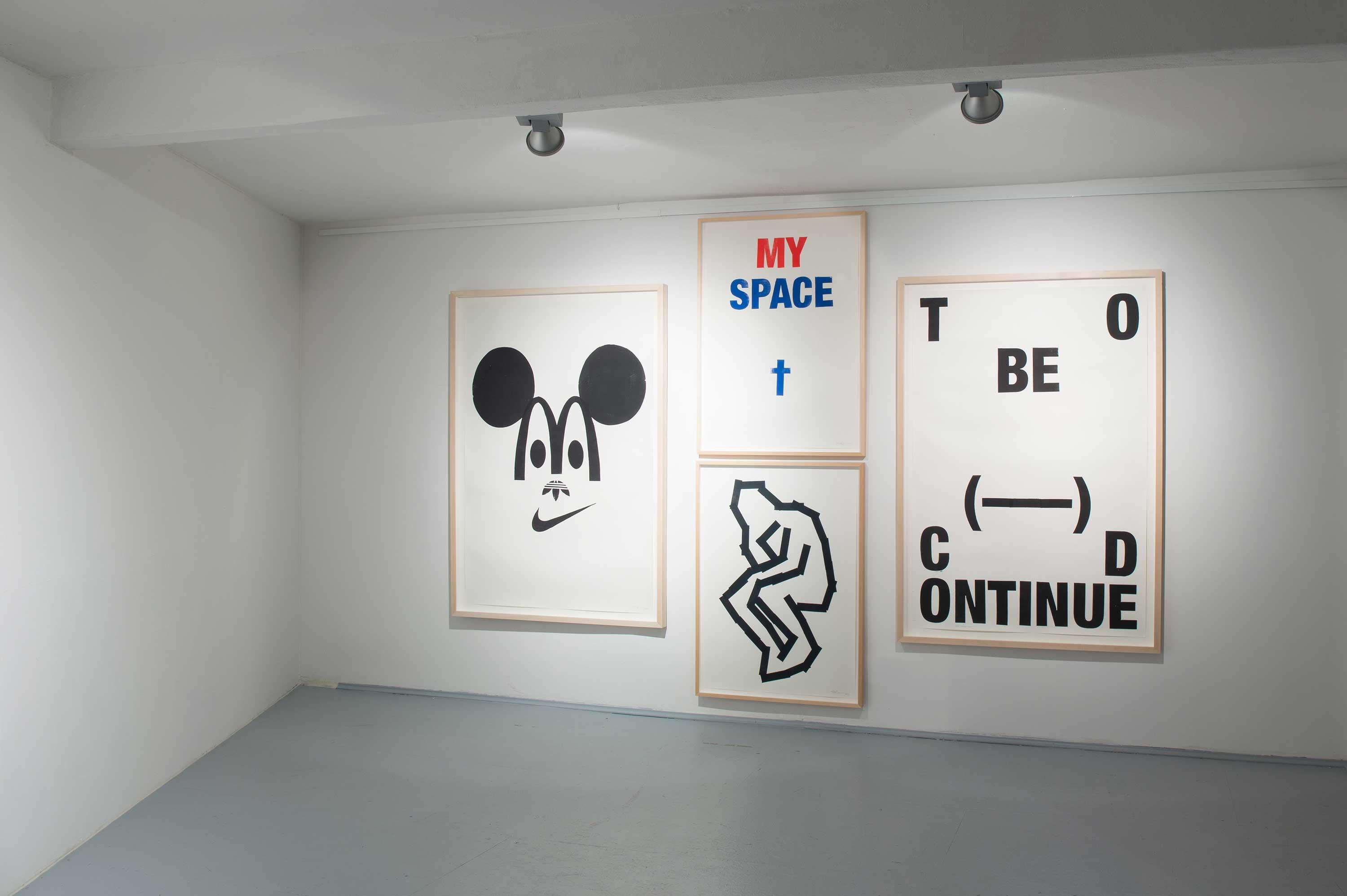
Living and thinking are the best ways to avoid boredom.
The Tattoos. Very interesting.
Yeah. They have become an addiction. It all started totally harmlessly. I never wanted to wear any jewellery. I don’t like rings or chains, and tattoos were something I liked to admire on my friends’ skin – never my own.

Then, one day, I got a tattoo from Stefan Marx, an artist from Hamburg. He gave me that tattoo at our Tattoo-Club. And I have not been able to stop since.
Most of my tattoos are designed by one of my students: David Schiesser. I share a studio with him and the painter Malte Zenses in Berlin.
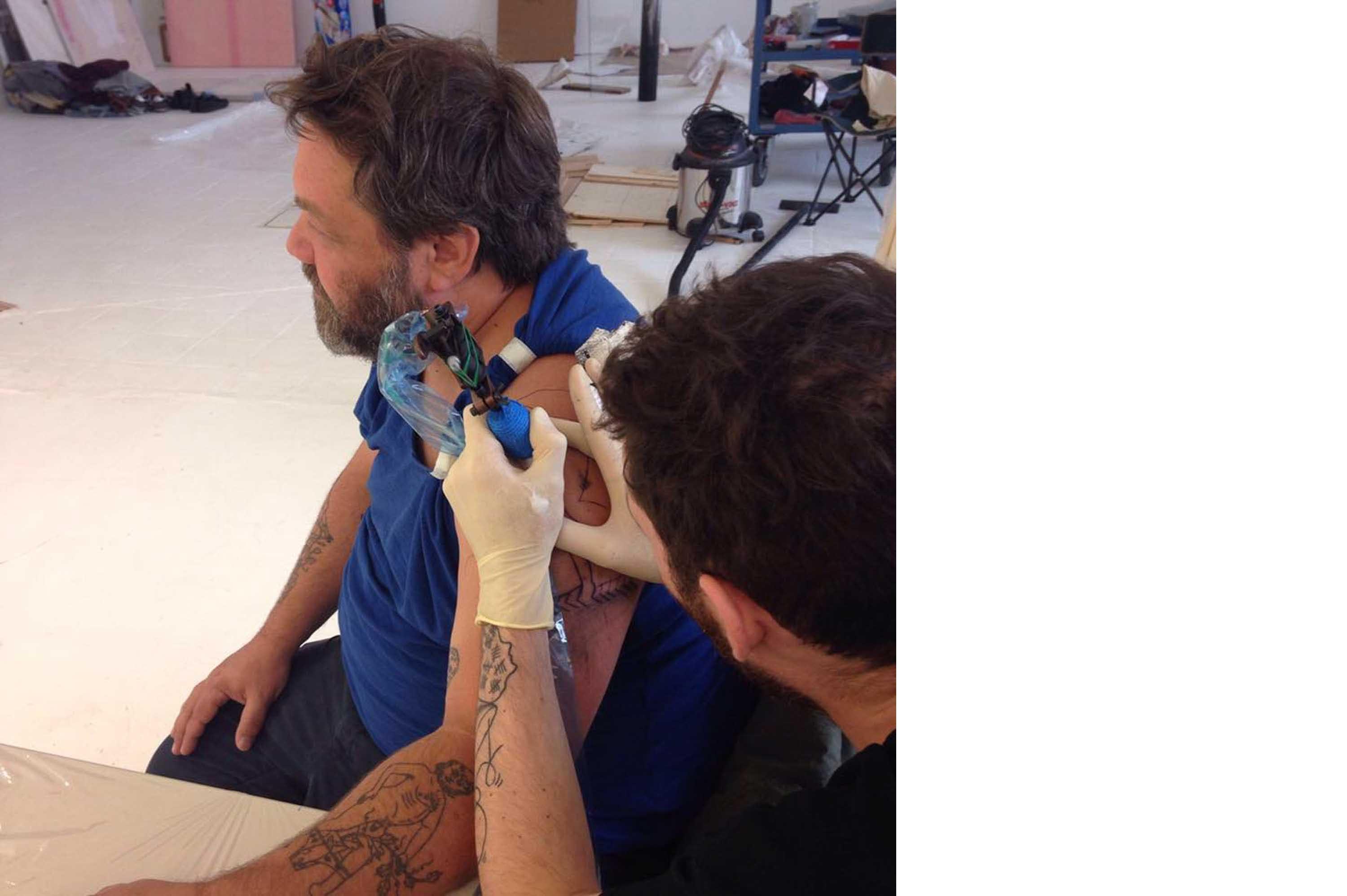
Every image on my skin is connected to a story, to an experience. Every image is connected to a kind of pain that gets anchored into the memory. I am not sure when it will be enough, or if that moment even exists. My most recent tattoos were the letters HORT and EFGK (my initials) on the inside of my fingers. On the outside it’s HOLD – FAST. A bit badass.
Ha, Thank you
My pleasure
Cover portrait of Eike König was shot by British Photographer Cat Garcia.


